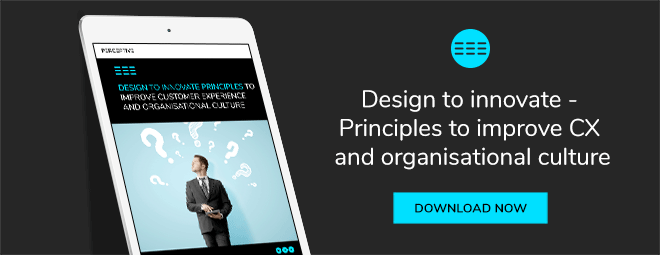 As a business leader you can use certain tactics in meetings and brainstorms to get the best results and get those creative juices flowing. They will also improve your company culture and customer experience.
As a business leader you can use certain tactics in meetings and brainstorms to get the best results and get those creative juices flowing. They will also improve your company culture and customer experience.
More often than not, the two go hand in hand. These tactics are all from the "design thinking" school of thought and they work by making everyone feel included, embracing a culture where it's okay to fail. Importantly, it's encouraged to be creative in order to foster new, innovative ideas.
Here are five design principles that work well in brainstorms (which is where those big, bold, audacious ideas often transpire).
1. Lightning rounds.
This won’t work for every situation but try testing your team’s ability to fix something on the spot and deliver to market within a short time-frame. A speed round will test your people’s skills to the max. It also often facilitates people to come up with creative solutions on the spot. Ask your team to have a better solution by the end of the day or in a couple of hours. Make sure you have the right group assembled and blended by using cross-functional teams, using strong players. This is something you can try once to see how it goes, and refine from thereon.
2. Let others shine.
As a leader of a session, don’t take over the whole conversation. Your aim is to become a facilitator and mediator and give the floor to someone who’s worked towards finding a solution, and praise them for their participation. Encourage them to present their thoughts and make it a safe place for them to do so. Even if it doesn’t always seem that way, everyone is creative, your role as a leader is to give everyone the opportunity to speak up and propose a solution or idea.
3. 80% is good enough.
The design process is all about being better, not perfect. Sometimes getting 80% there is okay, as long as it’s better than what it was before, it doesn’t have to be perfect. In most cases you can improve a few things and deliver something better to market.
4. Break the rules.
Breaking rules is needed sometimes. Let it be okay to lose control a bit, in a positive way. Encourage some freedom of exploration, but stay focused on finding solutions to the problem at hand, and use metrics to ground people while allowing creative license.
5. Spot when people check out.
It’s easy to spot when people are not paying attention. Observe your team’s behavior and try to create the necessary dynamic by breaking the mold a bit. Ask certain people what they think can help, and allow them to speak up.
